Up Next

As our writers continue to pick their highlights of The Race’s 2021 content, Matt Beer selects an article that travelled back 40 years for an often forgotten bleak day in F1.
As a teenager trying to quickly accelerate my motorsport knowledge because I was a bit of a late starter who desperately wanted to be a motor racing journalist as swiftly as possible, I requested a selection of four Duke Video F1 season highlights VHS tapes for Christmas 1995. I’d decided 1981, 1984, 1989 and 1993 looked like the right cross-section to bring me up to speed (and four videos was an affordable amount for my parents).
The events of Zolder 1981 (and how graphically they’re portrayed on the highlights video) were a jarring element of a season I quickly became obsessed with.
In the very earliest days of The Race’s inception in 2020, Sam Smith mooted a feature with some of those involved in that dark day and it was instantly commissioned for the 40th anniversary a year later. It didn’t disappoint.
Formula 1 was a bit of a basket case in 1981.
At Zolder, the fifth round of that year’s world championship, it seemed like all of the sport’s malignant issues came together in an appalling weekend of confusion, toxic rancour and a needless waste of life.
(lead image courtesy of Manfred Giet)
This melting pot of discord and political bitterness congealed in front of a then relatively rare live TV broadcast, which in turn let the whole sorry spectacle play out to millions of viewers on the afternoon of Sunday May 17.
What they saw was an atrocious spectacle. One that included a chaotic grid protest from mechanics and drivers, a disordered start procedure and a shambolic accident that culminated with an injured mechanic sprawled across the track.
He was presumed dead by the driver who had hit him. That driver, who was starting only his third grand prix, was then fined for supposedly triggering the shambles.

(Image courtesy of Manfred Giet)
That driver was Siegfried Stohr, now merely a curious footnote in F1 history. Like hundreds of other drivers that reached the pinnacle but failed to make a serious impact, he has a story to tell, but his is more incredible than most.
“What happened all those years ago is against almost any belief now all these years forward,” Stohr tells The Race in his quirky but engaging English.
“I look back at that weekend now and I see a blackness, a sadness.”
For Stohr’s Arrows team boss, Jackie Oliver, the bigger picture was all a matter of short-term pain for long-term gain in many of the events that led up to his team being at the centre of the infamous episode.
“Essentially there were the ‘grandees’ as they were called, and there was the ‘garagistes’ in F1 at that time, which was us, Bernie Ecclestone [Brabham], Ron Dennis [McLaren], Colin [Chapman – Lotus] and Frank [Williams],” Oliver tells The Race.
“Really, the argument was about taking commercial control [of F1], which Bernie did, and you have to say it worked out very well.
“But like any major change in life, there’s always a bit of fighting and in 1981 it was more than just a bit. It was a very dramatic time.”
The toxic stage
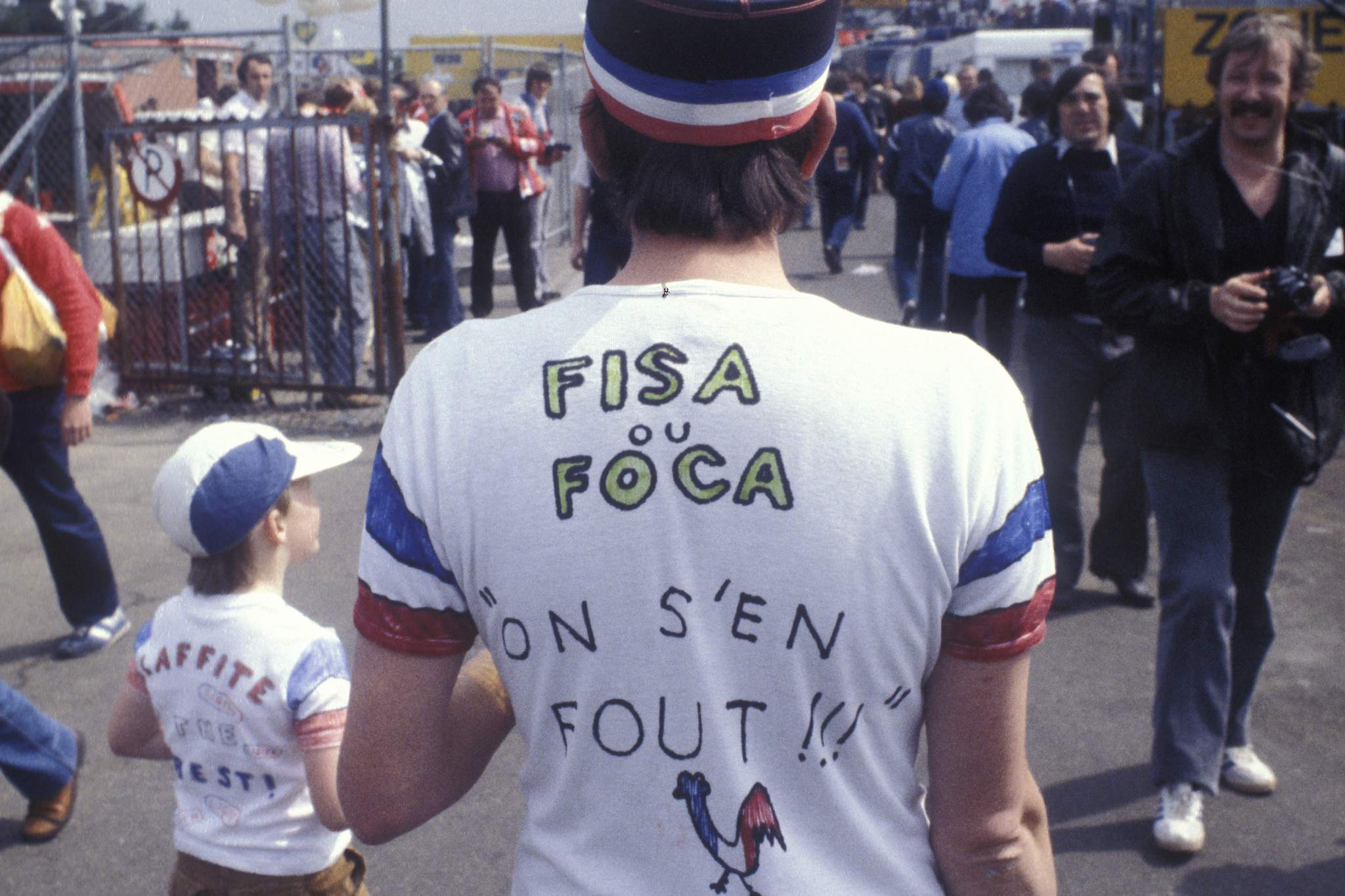
Zolder was just a few months on from the renegade South African Grand Prix at Kyalami, which was organised for what were known as the FOCA teams (the group containing Williams, Brabham, etc) under the dubious auspices of the World Federation of Motorsport.
All teams bar Alfa Romeo, Ferrari, Ligier, Osella and Renault attended that race, which was unsurprisingly not granted world championship status by FISA – as the FIA was then titled.
By Zolder the main bone of contention was a technical one. FISA decreed that hydraulic and pneumatic suspension systems – methods of adjusting ride height for maximum ground effect aero – were legal and that the previously popular ground effect skirts had to be solid and non-sliding.
Part of the rushed through regulatory mandate stated that “no ride height adjusting device should allow the car in its lowest position to have a ground clearance of less than six centimetres”.
This part of the rules was flagrantly ignored by teams in Belgium. While many picked at the semantics of the rule, others laughed in its face – with Renault running dual rate springs and Ligier briefly running hinged skirts!
The atmosphere of lawlessness turned to open chaos as the weekend progressed. This was as close to the wild west as F1 came during a time of abject turmoil.
But grimmer matters prevailed on Friday afternoon, when in the absurdly cramped pitlane, which had already been described as unworkable by some teams before heading to the track, tragedy struck.
Giovanni Amedeo, a 21-year-old Osella mechanic, tripped and fell from the narrow stepped pitwall and into the path of Carlos Reutemann’s Williams. With the pitlane rammed full with an uncontrolled mix of teams, hangers-on, media and even some members of the public, the tight confines left no room for Reutemann to miss the unfortunate youngster.
“Zolder was terrible for mechanics to work at, very difficult,” says Stohr.
“In the paddock there was one toilet for over a thousand people or whatever, and the design of the pits was not so nice. It was always chaotic there.”
Amadeo received a serious head injury from which he would die the following week. Some of his fellow mechanics decided to show their anger by downing tools on the grid to make their grievances public as the live TV cameras ran.
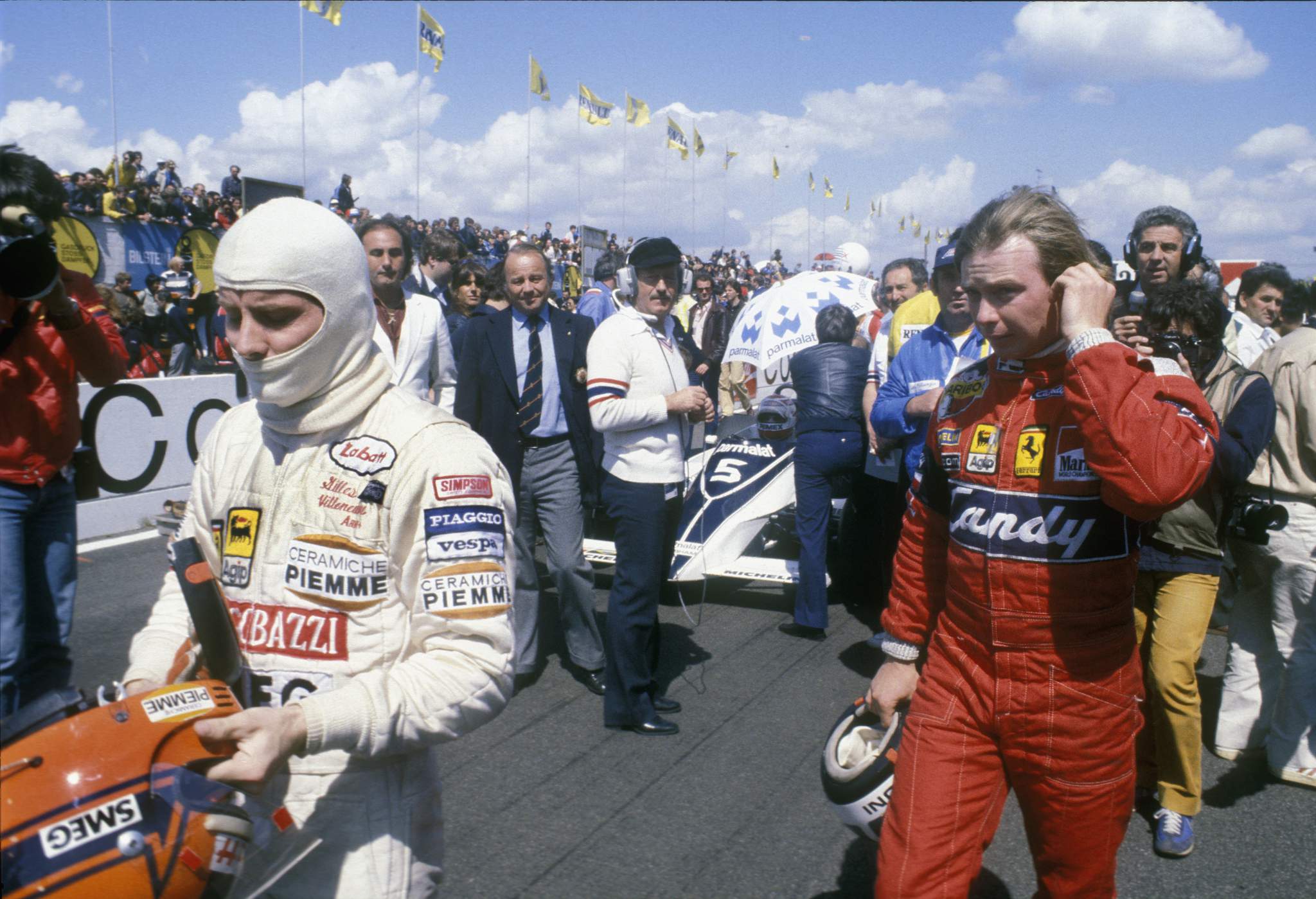
But the main thrust of the demonstration was actually the Grand Prix Drivers’ Association, which wanted to make its point regarding what it believed to be an absurd decision not to hold a pre-qualifying session on the Saturday to boil down the 31 entries to the then maximum grid of 24 starters.
This was just one of dozens of issues that the drivers, largely led by Didier Pironi, wanted to be aired in the full view of a live TV syndication.
The broadcast had been instigated by Brabham boss Bernie Ecclestone, as he continued to gain traction as the commercial leader of F1 as it jerked nervously into the 1980s.
Confusion reigned and no one appeared to be in control. Some drivers stayed in their cars and others milled around the front of the grid with a host of mechanics and story-hungry media.
Ecclestone, Lotus boss Colin Chapman and Tyrrell owner Ken Tyrrell strong-armed their respective drivers and refused to let them leave their cockpits.
Little did any of them know it, but a chain reaction had been started that would come back to haunt all of them just a few minutes later.
The febrile grid, the grisly accident
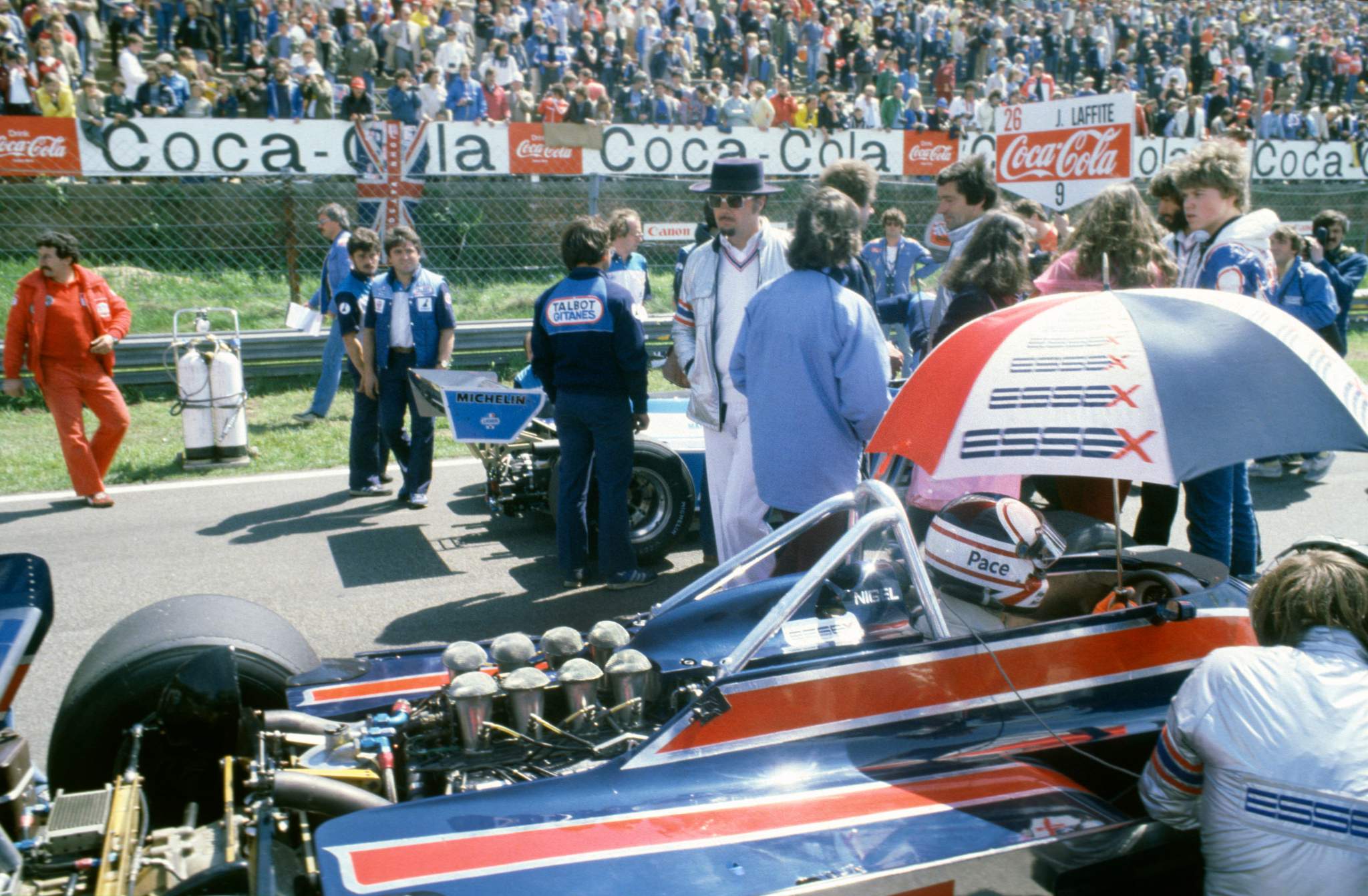
James Hunt, just beginning his now-legendary commentary partnership with Murray Walker, gave his typically trenchant views about the scene on the grid during the build-up, which was screened live on BBC’s Sunday Grandstand.
“The pit road is far too narrow and there are far too many people in it,” he observed.
“A lot of people get in the pit road who actually don’t have anything to do except lurk and pose, and of course that gets up their noses.”
In footage of the grid scene, which can be found on YouTube, Ecclestone can be viewed shouting at his driver Nelson Piquet – who had qualified second – to ‘go’ as other drivers are making their way back to their cars following the chaotic demonstration.
Piquet drove off, and in doing so triggered the appalling events.
Stohr recalls vividly what he saw as he stood in solidarity with the mechanics, along with approximately half of his fellow drivers who also wanted to make their own points, which they felt had been ignored for far too long.
“I remember walking past Bernie and he was shouting at Piquet on the grid to go on his warm-up lap,” says Stohr.
“The other ones were Tyrrell and Chapman. That was the reason only some drivers jumped down from the car and cannot reach us [on the grid] because Ken, Colin and Bernie said to their drivers ‘if you get out, you will never sit in my car again’.
“The real problem was Bernie was paying the TV satellite by the minute, so he was very angry. Because there was a lot of money at stake and as we know Bernie and money are strongly linked always.”
A nervous Stohr ran back to his car and he recalls a surreal situation as he struggled to get in the cockpit and belted up as some drivers already departed.
“I walked back with Mario [Andretti] who was very cool and just walking but I started to run because I was nervous but Mario was laughing about this whole situation, it was very strange.”
While Stohr, Andretti and others got belted up, Piquet, who should have led the 23 other cars around in the stipulated orderly fashion, instead bolted for a second warm-up lap.
“It was really poor, we were at the beginning of a new era of working and it was completely blind sometimes” :: Roland Bruynseraede
By the time he and a delayed Gilles Villeneuve came to thread their way through the grid, several cars’ water temperatures were sky rocketing. Pole-sitter Reutemann was one of them, while Eddie Cheever (eighth on the grid for Tyrrell) and Stohr’s team-mate Riccardo Patrese (fourth) were others.
Cheever, who switched off his engine in the mistaken belief the race would be rescheduled, was then restarted via external means. But Patrese’s Arrows crew took more time as it similarly decided to deploy chief mechanic Dave Luckett over the wall to get the Italian going again.
“Some drivers were switching off the engine because they thought it would be delayed and I almost did the same,” says Stohr.
“I think [team manager] Alan Rees or maybe Dave signalled to Riccardo that the race will be stopped [aborted] so he switched off. But sadly this was not the case that the race was stopped.”
At almost the precise moment Luckett ducked under Patrese’s rear wing to insert the starter, the lights were turned green.
It was an unfathomable decision because not only was it clear Patrese had stalled but incredibly there was, quite astonishingly, a blazered official (believed to be clerk of the course Paul Grutman) standing on the grass no more than two metres away from the action!
In race control there was confusion too. Then official starter Derek Ongaro was “about 20 metres in front of the leading car and about one metre above the guardrail”, according to his assistant at the time, Roland Bruynseraede.
Bruynseraede – pictured below in 2003 – would go on to replace Ongaro as the official starter and circuit inspector. In 1981 he worked closely with official clerk of the course Grutman.
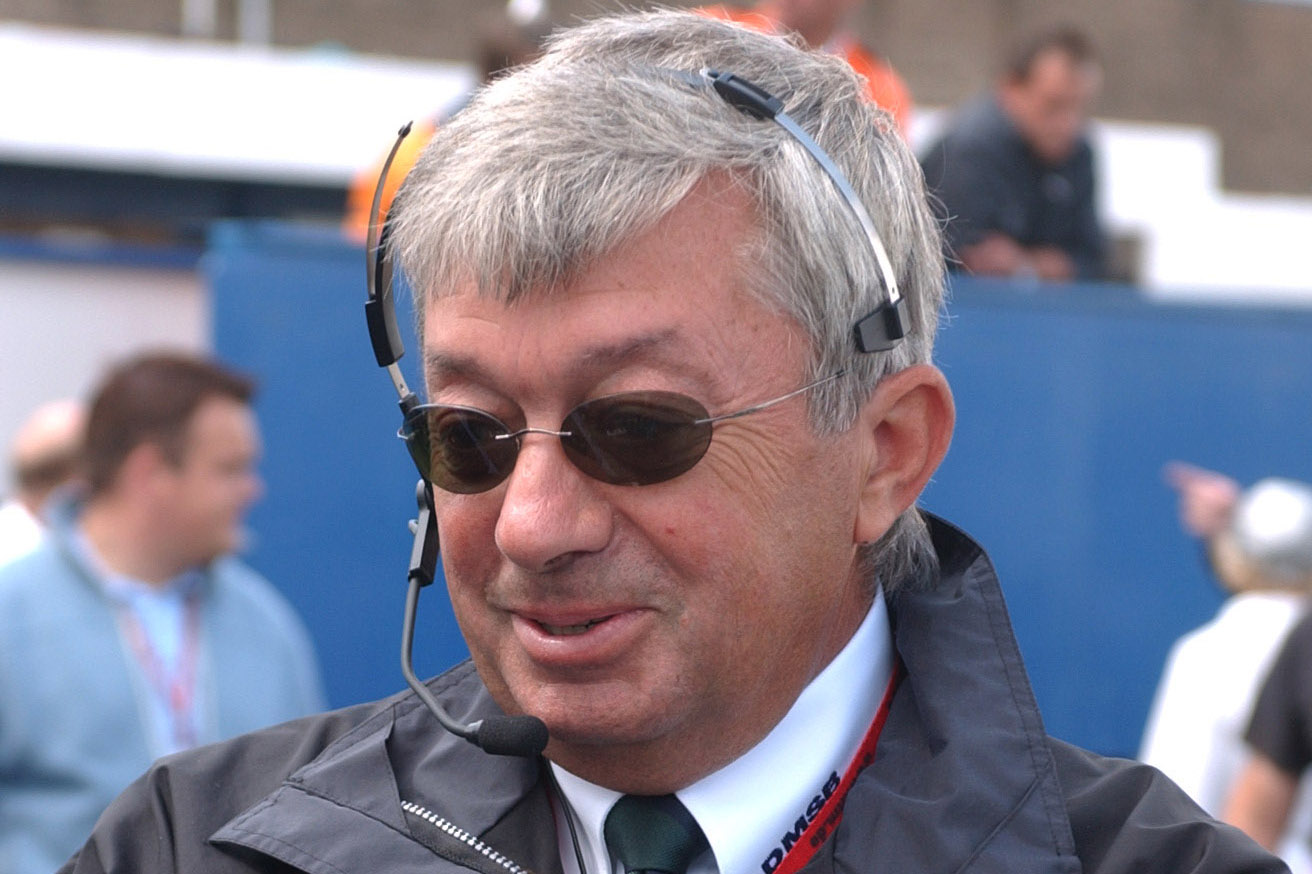
He makes the very valid point that motorsport simply didn’t have the same communication systems as today and race control was not in full time contact with either Ongaro or Grutman.
“If you’re sitting today in race control today you have all your visuals you need in front of you,” Bruynseraede tells The Race.
“But not only that, you have so much information that you receive in each car, we can follow each car, let’s say by every metre on the circuit. In 1981 this was just not there.
“You have so much more information around the circuit, each marshal can communicate with race control. In those times it was not existing, it was really poor, we were at the beginning of a new era of working and it was completely blind sometimes.”
Ongaro plainly didn’t see Luckett vault the barrier and was already committed to starting the race anyway. Had Ongaro himself been pressured on the grid too in light of the incessant TV satellite meter ticking incessantly, and had he then rushed through the procedure as the muddled grid formed itself?
As the cars sprinted away Patrese glanced over his shoulder and saw Luckett approach the rear of his car. He then stopped waving his arms, and with no yellow flags warning of the stalled Arrows, the situation on the narrow pit straight went from confused to starkly terrifying in a matter of seconds.
Alan Jones jinked his Williams just out of the stricken Patrese’s way and a following Nigel Mansell missed hitting the Arrows by mere inches.
However, from his best-ever slot of 13th, Stohr was unsighted by Keke Rosberg’s Fittipaldi, so when the Finn jinked right on seeing Patrese, Stohr was confronted by the rear of the Arrows and also to his horror a crouched Luckett, starter in hand.
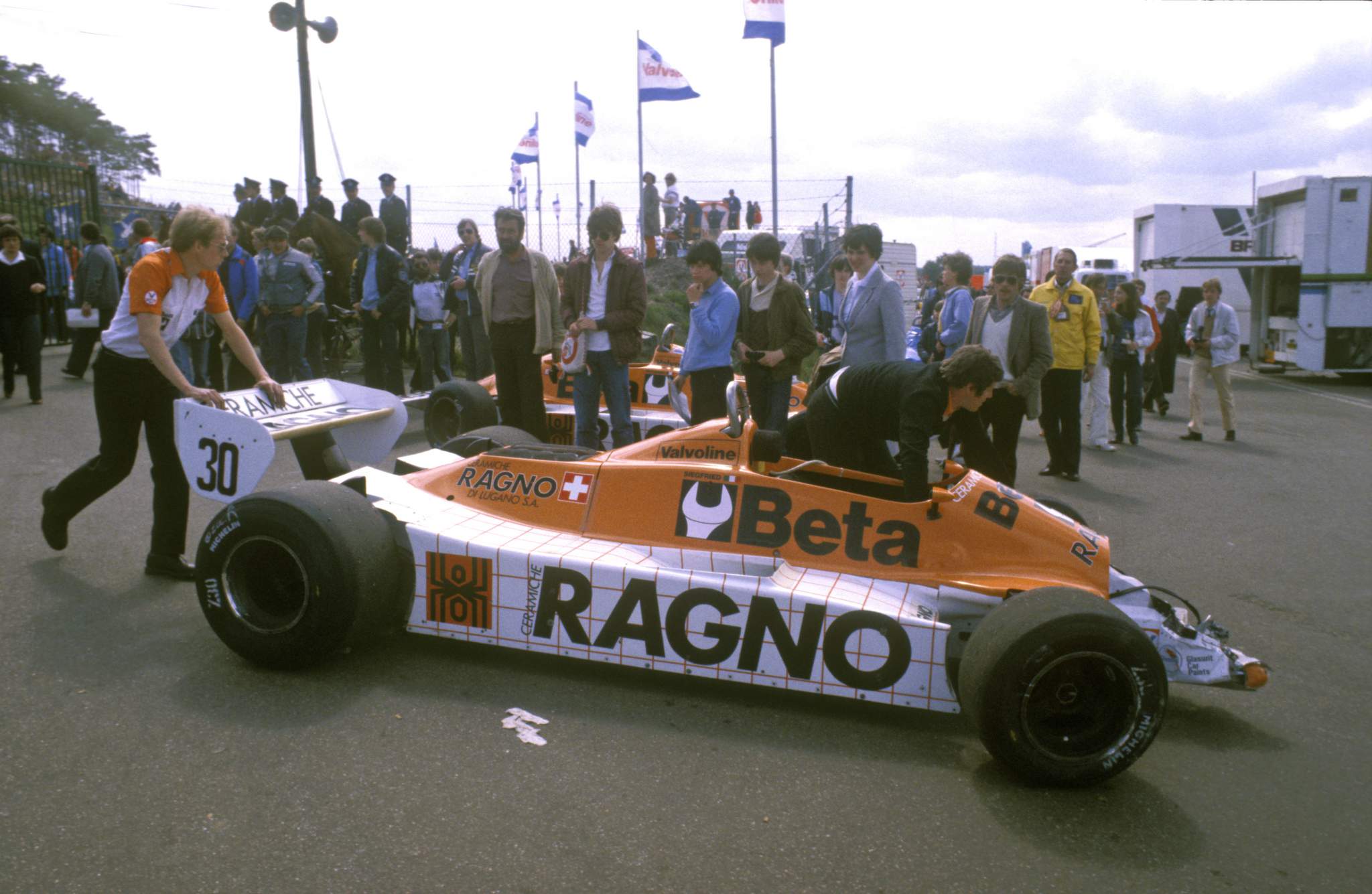
Despite braking “so hard I detached a ligament in my foot” Stohr slammed into the back of Patrese and sent Luckett sprawling in the full view of the live TV cameras.
“I saw Dave, and as I was about to hit I thought for sure he will die,” says Stohr.
“When I hit I was even more sure he was gone, and you can see when I jump from the car my reaction was very bad because I see Dave had unconscious movement and I see from his ear some blood.”
Stohr vaulted from his car but tripped over the cockpit side as he did so in his hurry to tend to the stricken mechanic. Clearly distraught, he was instantly led away by a quick-thinking Ligier mechanic as Luckett was tended to by first his own mechanics and then by medics.
Unbelievably, the race somehow continued as an ambulance on the grid readied to take the injured Luckett to hospital.
In scenes which beggar belief in the context of the slick manner in which F1 is run today, leader Piquet passed the harrowing scene at full racing speed while the rest of the pack followed.
Cheever, unsighted in his Tyrrell 010, even had to back out of a move on John Watson’s McLaren in avoidance, while Marc Surer’s Ensign ran onto the grass to avoid the melee.
What makes the whole farrago even darker is that the ambulance taking Luckett to the medical centre completed an entire lap while the race was still live, and the field passed it on track!
Still the race was not red-flagged though and a second lap was completed although this time most of the grid parked on the grid and effectively stopped the race themselves in scenes of utter chaos which almost rendered Hunt speechless, but not quite.
“I hold organisers totally responsible for that total incompetence there,” said Hunt furiously.
“I’m afraid the organisers have behaved in a typically amateurish incompetent way and we’ve got a person at least seriously injured.”
The fallout and the learnings
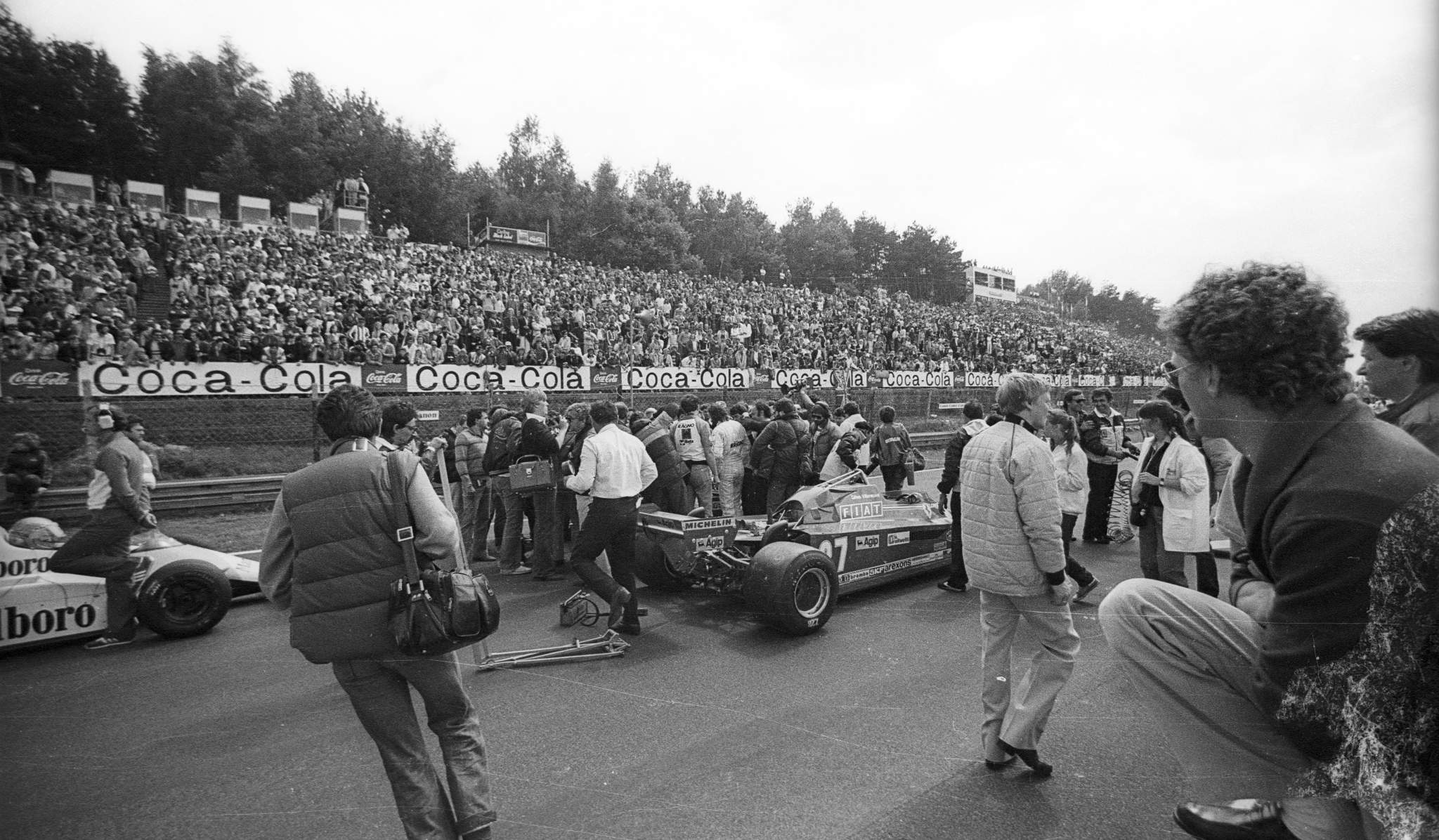
(Image courtesy of Manfred Giet)
As Ongaro made his way back to race control, stopping at the scene to oversee Luckett’s rescue, Bruynseraede was monitoring events in race control but didn’t have TV images to see the scene of chaos on the grid.
“We didn’t have the same pictures, so before we knew how bad it was there was already one lap gone in the race,” he says.
The delay in stopping the race is explained away via the lack of communication and the haste in which medical teams ferried the unconscious and seriously injured Luckett to hospital.
The fallout from the incidents led to Grutman immediately resigning his post and stopping his involvement in motorsport at such a level. He died in 2012.
Stohr, still filled with adrenaline and rage, patrolled the new dummy grid and sought the counsel of GPDA director Pironi and his Ferrari team-mate Villeneuve in full view of TV cameras and photographers.
“The only drivers I started speaking with when I joined F1 were Didier and Gilles and we talked in French after the accident,” recalls Stohr.
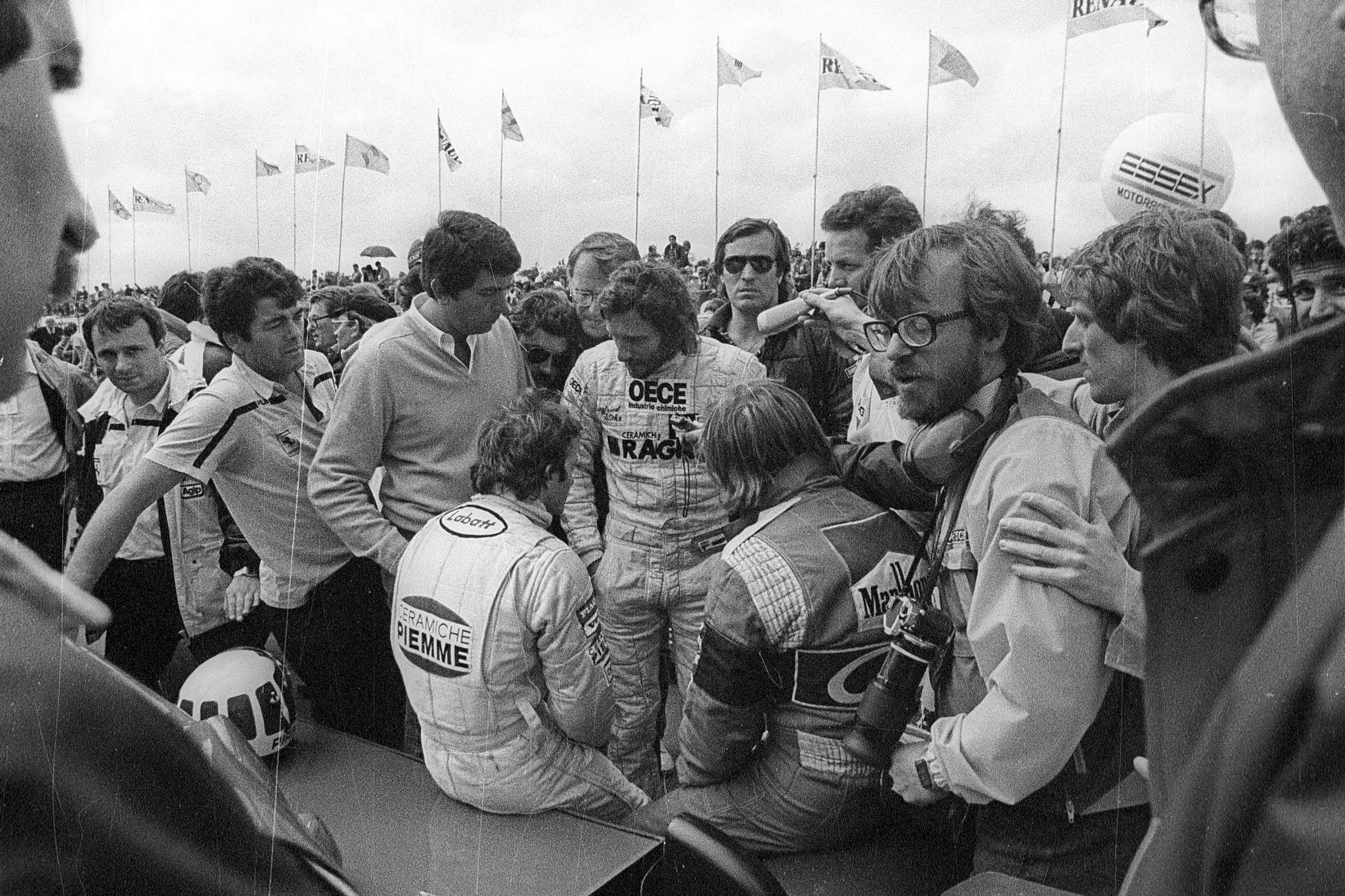
(Image courtesy of Manfred Giet)
“I remember Pironi takes my hands and without saying anything he makes a gesture to me ‘be quiet’.
“And Gilles told me in very cold words: ‘Siegfried, be careful of what you are saying.’
“I was surprised of what Gilles told me because I was expecting him to say something more friendly. In fact, he was very cold with me. ‘Be careful of the words you are using,’ he kept saying.
“In the end I just left.”
This gives some indication as to the feeling of volatility and paranoia that existed in 1981 primarily through the fear that FISA president Jean-Marie Balestre had started to instil.
The Ferrari drivers’ words, while surprising to an inexperienced Stohr, were soon proven to be a pertinent warning.
When he and the 11 other drivers that had vacated their cockpits in Zolder turned up at the next race in Monaco, they were issued with an astonishing official FISA summons for them to be relieved of $5000.
“I had to go and pay with the other drivers $5000 because it was ‘all our fault,’ ” says Stohr.
“This came from Balestre. He is a man I cannot talk about even now 40 years later because I get so angry.”
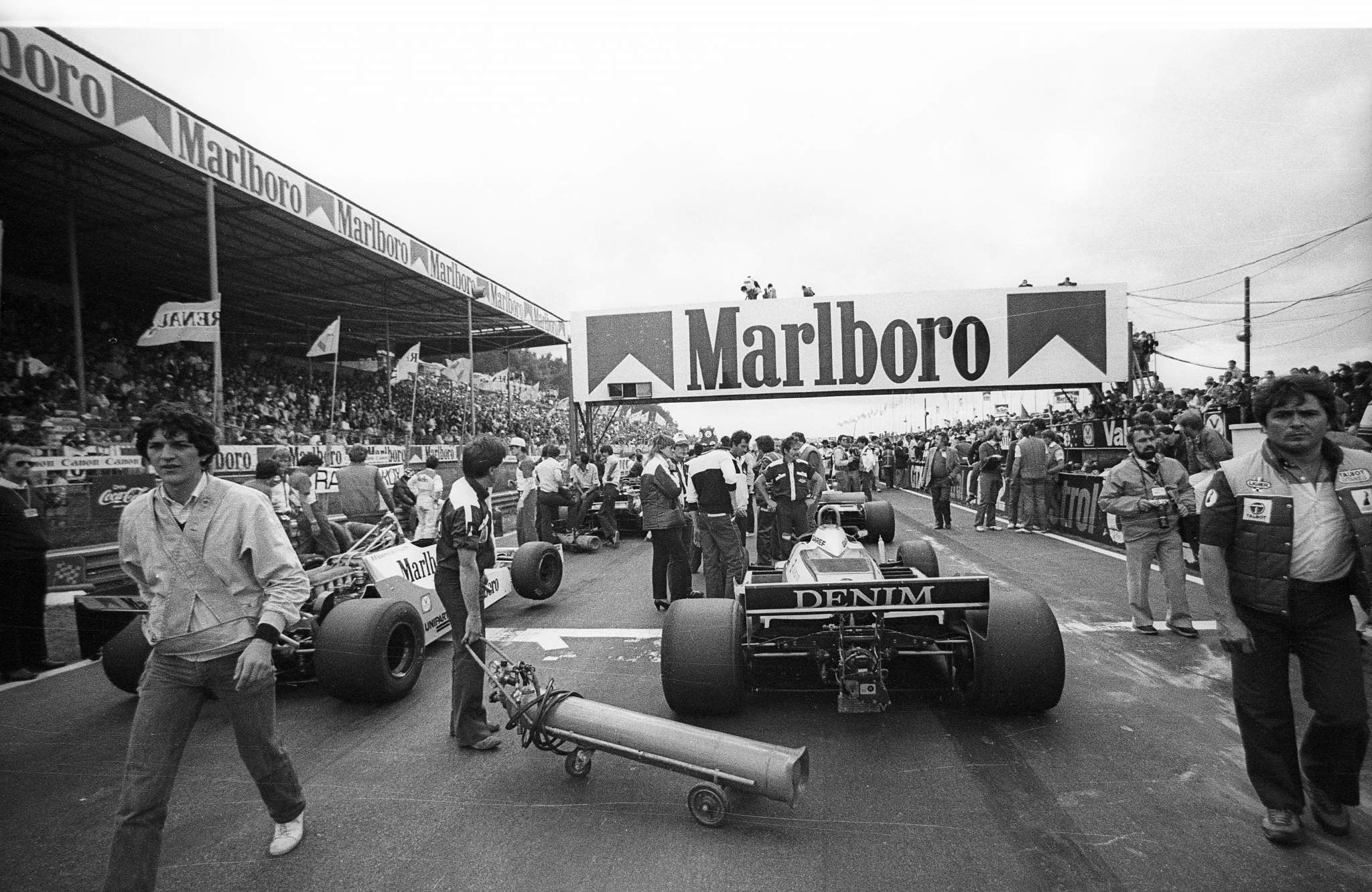
(Image courtesy of Manfred Giet)
As for official investigations into the incidents at Zolder, nothing public was ever officially released. However, internal lessons were learned, as Bruynseraede outlines.
“Every race you learn something and back in 1981 we learned lots all the time because the sport was growing with technology and even in the media too,” he says.
“If you see what’s happened last year, in Formula 1, [Romain] Grosjean has been very lucky. If the head protection had not been put in a few years before, 100% he was dead.
“Maybe we will have next year another accident, I don’t know what or why or where and I certainly hope we don’t, but every year you learn something.
“Every race and every commission that we are doing, we are working only to give more safety for every driver and not only F1 but for all racing.”
Practically speaking the lessons were also far-reaching and noticeable almost immediately for the competitors.
“The RACB [Royal Automobile Club de Belgium] decided simply to get the race on because it was already 20 minutes delayed. That’s what caused the accident, it was plain this is what happened,” says Oliver, 40 years on.
“Everybody talked about it, and they understood why there was confusion, and they put a meeting together with FISA to say in the event of delay, there should be rescheduling of the whole procedure.
“This morphed into the present thing whenever you do that, you have a red flag, everyone goes in the pits or goes onto the grid and then you do the whole procession again, with regard to the warm-up lap.
“As a direct consequence this was all rightly inserted into the regulations and tweaks since 1981.”
The fallout from the events has to be put into perspective. This was a pre-internet time of course and although the live TV viewers were shocked and outraged by the amateur spectacle they had no other way of expressing their feelings than writing letters to magazines, which by the time they were published usually meant the shocking events had dissipated somewhat.
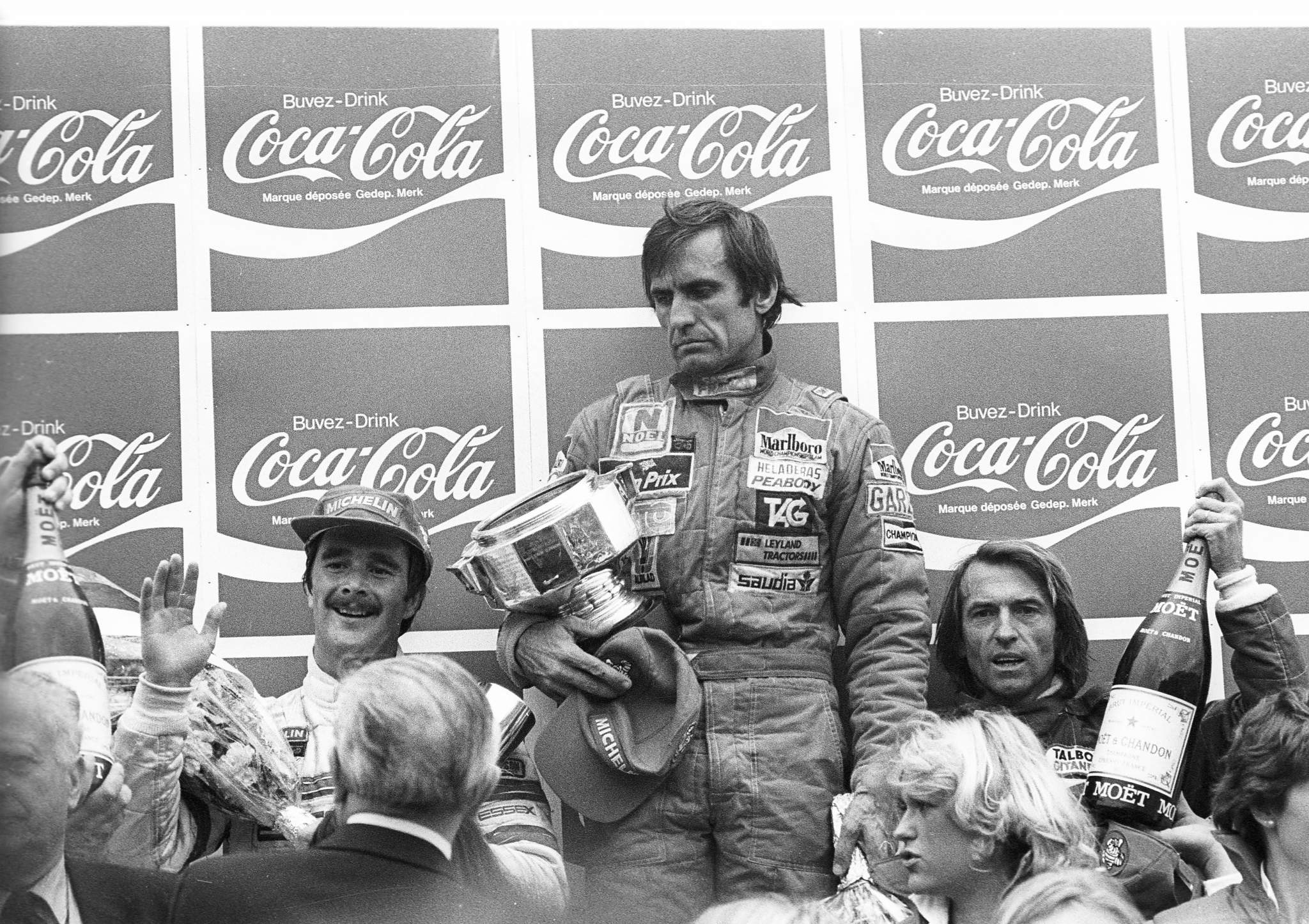
(Image courtesy of Manfred Giet)
Interestingly, in the following Thursday’s edition of Autosport magazine the front cover barely alluded to the shambles. It ran, quite spookily, with a shot of a relaxed Reutemann sat in his Williams FW08 in the pits. However, on closer inspection it appears that this photo is actually from the previous grand prix at Imola!
The rather lethargic headline read: ‘Reutemann extends lead’, while the sub-head details simply ‘Dramatic Belgian GP’. These were very much different times.
Inside the pages though there is a detailed analysis of the incident written by future Leyton House and Jordan team manager Ian Phillips. Intriguingly he relays that “at least three requests – in English – were made over the PA system that someone from the Arrows team should go to Patrese’s aid”.
In the letters section of the magazine a Mr. John Stewart of Keighley spoke for many fans when he wrote he was “disgusted” by what he saw.
“The whole F1 show stinks and, as far as I am concerned, the 1981 Belgian GP farce will stand as a suitable epitaph. Count me out on July 18 [British GP].”
And the victim of the grid accident, Dave Luckett?
He made a quick recovery from a broken leg and lacerations, went on to work in racing for a further three decades for Arrows, Leyton House, March, West Surrey Racing and the Highcroft sportscar team.
But there was one other injury from his 1981 grid escapade which got the attention of his boss Oliver.
“I took Dave out to dinner after he’d recovered to see how he was getting on and I got some of the other guys together to cheer him up,” he recalls.
“I said ‘you were bloody lucky there, Dave’. He said, ‘yeah but look,’ and just as we are about to eat he put his hand up and the top of his little finger is missing.
“He’d snagged it on the back of the gearbox when he got pushed into the car. Put me right off my dinner!”






